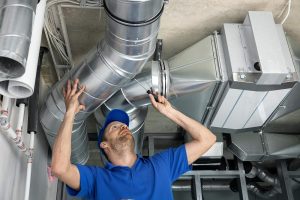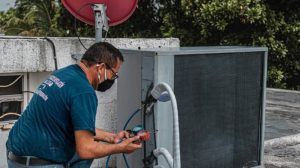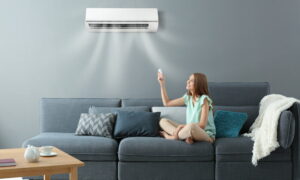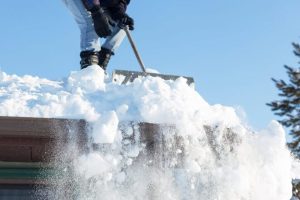Causes of Low Airflow in Your AC Unit

Low airflow in your AC unit can significantly affect your home’s comfort and energy efficiency. It can also lead to more severe issues if not addressed promptly. If you’re experiencing this problem and need professional help with AC repair in Manassas, VA, it’s essential to understand the common causes of low airflow in your air conditioning system. Here are the primary reasons your AC might be suffering from restricted airflow and what you can do about it.
1. Clogged Air Filters
One of the most common causes of low airflow in an AC unit is a clogged air filter. Over time, dust, dirt, and debris accumulate on the filter, restricting the airflow through the system. When the air filter is clogged, your AC has to work harder to push air through, leading to reduced efficiency and increased wear and tear on the system.
Solution
To prevent this issue, it’s crucial to check and replace your air filter regularly. Most filters should be changed every 1-3 months, depending on the type of filter and your household conditions, such as the presence of pets or high dust levels.
2. Blocked or Leaky Ducts
Blocked or leaky ducts can also cause low airflow in your AC system. Obstructions such as dust, debris, or even pests can block the ducts, reducing the amount of air that reaches your living spaces. Additionally, leaks in the ductwork can cause conditioned air to escape before it reaches the vents, leading to reduced airflow and inefficient cooling.
Solution
Regularly inspect your ductwork for any signs of obstructions or leaks. If you notice any issues, it’s essential to have a professional HVAC technician clean and seal your ducts to ensure optimal airflow and system performance.
3. Frozen Evaporator Coils
Frozen evaporator coils are another common cause of low airflow in an AC unit. When the coils freeze, they can’t absorb heat effectively, which restricts the flow of air through the system. This issue can be caused by various factors, including low refrigerant levels, poor airflow, or dirty coils.
Solution
If you suspect that your evaporator coils are frozen, it’s important to turn off your AC unit and allow the coils to thaw. Once they have thawed, check for any underlying issues such as low refrigerant levels or dirty coils. For a more detailed explanation of why your AC freezes and how to fix it, read this informative article.
4. Faulty Blower Fan
The blower fan is responsible for pushing air through your AC system and into your home. If the blower fan is faulty or damaged, it can significantly reduce the airflow in your system. Common issues with blower fans include worn-out belts, motor problems, or debris buildup on the fan blades.
Solution
Inspect the blower fan for any signs of wear and tear or debris buildup. If you notice any issues, it’s essential to have a professional HVAC technician inspect and repair the blower fan to ensure proper airflow and system performance.
5. Undersized or Oversized AC Unit
An improperly sized AC unit can also cause low airflow issues. If your AC unit is too small for your home, it may struggle to provide adequate airflow and cooling. On the other hand, an oversized unit can cycle on and off too frequently, leading to poor airflow and inefficient cooling.
Solution
Ensure that your AC unit is properly sized for your home by consulting with a professional HVAC technician. They can perform a load calculation to determine the correct size of the unit needed to provide optimal airflow and cooling for your home.
Conclusion
Low airflow in your AC unit can lead to discomfort and higher energy bills. By understanding the common causes of restricted airflow, such as clogged air filters, blocked or leaky ducts, frozen evaporator coils, faulty blower fans, and improperly sized units, you can take proactive steps to address these issues. Regular maintenance and timely AC repair are essential for ensuring your system operates efficiently and effectively. If you’re experiencing low airflow, contact a professional HVAC technician to diagnose and resolve the problem, ensuring your home remains comfortable all year round.








